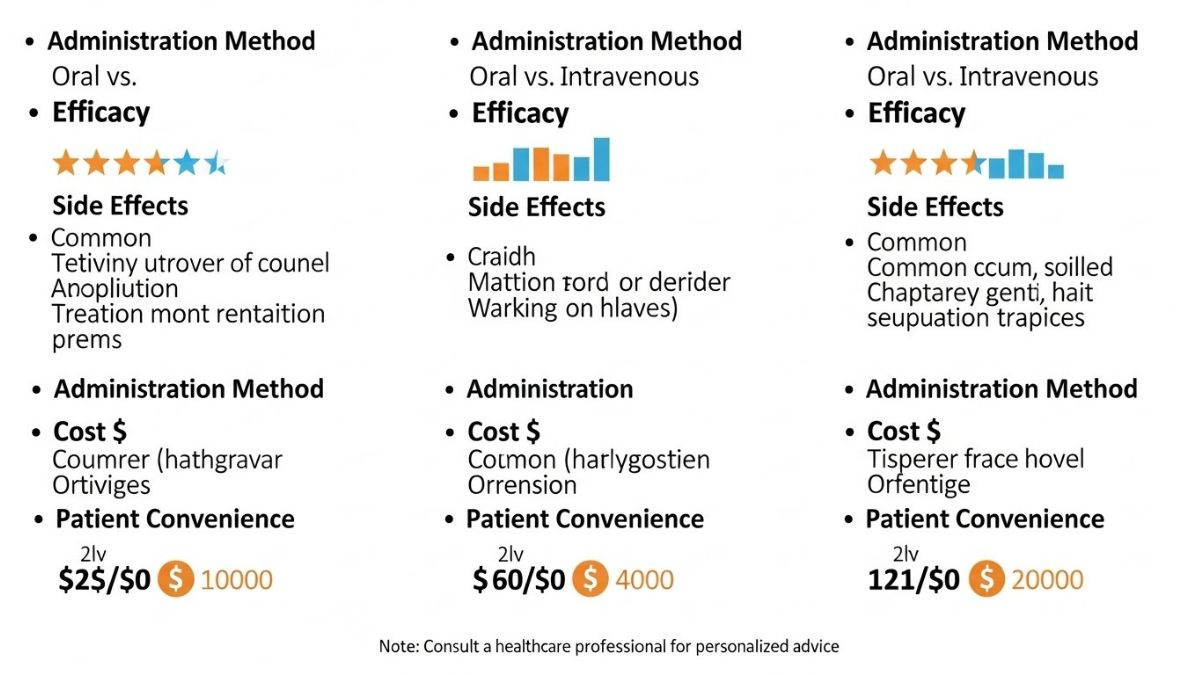HEALTH
Navigating Hashimoto’s Disease and Its Impact on Your Thyroid Health

Hashimoto’s Disease is a chronic autoimmune condition affecting the thyroid gland, causing inflammation and impaired function. Named after Dr. Hakaru Hashimoto, it impacts millions worldwide. Understanding its causes, symptoms, diagnosis, treatment, and future research is crucial for managing the disorder effectively. This blog post provides a comprehensive overview and practical tips for those affected.
Understanding the Root Cause
Hashimoto’s Disease is an autoimmune disorder. This means the body’s immune system mistakenly targets and attacks its tissues—in this case, the thyroid gland. The exact cause of this autoimmune response is not fully understood, but several factors may contribute to its development.
Genetic Predisposition
Research has shown that genetics play a significant role in the onset of Hashimoto’s. Individuals with a family history of thyroid disorders or other autoimmune diseases are at a higher risk of developing the condition. Specific genes associated with immune system regulation may increase susceptibility to Hashimoto’s.
Environmental Triggers
Environmental factors can also trigger Hashimoto’s Disease. These include exposure to certain toxins, infections, and even high levels of stress. For instance, viral or bacterial infections can prompt an autoimmune response that targets the thyroid. Additionally, excessive iodine intake and radiation exposure have been linked to an increased risk of developing the disorder.
Hormonal Imbalances
Hormonal changes, particularly those related to pregnancy, menopause, and puberty, can influence the onset of Hashimoto’s. Women are more likely to develop the condition than men, and it often occurs during periods of hormonal fluctuation. Understanding these triggers can help individuals manage their risk and seek early intervention if needed.
Signs and Symptoms
The symptoms of Hashimoto’s Disease can vary widely among individuals, making it challenging to diagnose without proper medical evaluation. Here are some common signs and symptoms to watch for:
Fatigue and Weakness
One of the most prevalent symptoms of Hashimoto’s is persistent fatigue and a general sense of weakness. This occurs because the thyroid gland plays a vital role in regulating metabolism, and its dysfunction can lead to decreased energy levels.
Weight Gain and Cold Intolerance
Unexplained weight gain and an increased sensitivity to cold are also common symptoms. The thyroid gland produces hormones that regulate metabolism, and reduced hormone production can slow down metabolic processes, leading to weight gain and difficulty staying warm.
Cognitive and Mood Changes
Hashimoto’s can affect mental health, causing symptoms like depression, anxiety, and brain fog. Patients may experience difficulty concentrating, memory problems, and mood swings. These cognitive changes can significantly impact daily life and overall well-being.
Diagnostic Process
Diagnosing Hashimoto’s Disease involves a combination of clinical evaluation, blood tests, and imaging studies. Here are the key steps in the diagnostic process:
Physical Examination and Medical History
A thorough physical examination and detailed medical history are essential first steps. The healthcare provider will look for signs of thyroid dysfunction and inquire about symptoms, family history, and any recent illnesses or stressors that could trigger the condition.
Blood Tests
Blood tests are crucial for confirming the diagnosis. The most common tests measure levels of thyroid-stimulating hormone (TSH) and thyroid hormones (T3 and T4). Elevated TSH levels with low T3 and T4 levels indicate an underactive thyroid. Additionally, tests for thyroid antibodies, such as anti-thyroid peroxidase (TPO) antibodies, can confirm the presence of an autoimmune response.
Imaging Studies
In some cases, imaging studies like thyroid ultrasound may be performed to assess the structural integrity of the thyroid gland. Ultrasound can detect inflammation, nodules, and other abnormalities that may indicate Hashimoto’s Disease.
Treatment Options
Managing Hashimoto’s Disease typically involves a combination of medication, diet, and lifestyle changes. Here are some common treatment options:
Medication
The primary treatment for Hashimoto’s is hormone replacement therapy with synthetic thyroid hormones (levothyroxine). This medication helps restore normal hormone levels and alleviate symptoms. Regular monitoring and dosage adjustments are often necessary to maintain optimal thyroid function.
Diet and Nutrition
Diet plays a crucial role in managing Hashimoto’s symptoms. Some patients benefit from a gluten-free diet or reducing intake of goitrogenic foods (e.g., soy, cruciferous vegetables) that can interfere with thyroid function. Anti-inflammatory foods, such as berries, fatty fish, and leafy greens, can also help reduce autoimmune activity.
Lifestyle Changes
Stress management, regular exercise, and adequate sleep are essential components of managing Hashimoto’s. Stress can exacerbate symptoms, so practices like yoga, meditation, and deep-breathing exercises can be beneficial. Exercise and sufficient rest support overall well-being and aid in symptom management.
Living with Hashimoto’s
Living with Hashimoto’s Disease requires a proactive approach to healthcare and self-care. Here are some practical tips for managing symptoms and improving quality of life:
Regular Monitoring
Regular check-ups with a healthcare provider are crucial for monitoring thyroid function and adjusting treatment plans as needed. Blood tests and physical exams help ensure that hormone levels remain stable and that symptoms are well-managed. For help with low thyroid like those in Boise, these regular assessments are essential.
Support Systems
Connecting with others who have Hashimoto’s can provide valuable emotional support and practical advice. Support groups, both in-person and online, offer a sense of community and a platform for sharing experiences and coping strategies.
Educating Yourself
Staying informed about Hashimoto’s and its management is empowering. Reading reputable sources, attending workshops, and consulting with healthcare professionals can help patients make informed decisions about their treatment and lifestyle choices.
Future Research and Development
The field of thyroid disease research is continually evolving, with promising developments on the horizon. Here are some areas of future research that may benefit those living with Hashimoto’s Disease:
New Treatment Approaches
Researchers are exploring new medications and therapies that target the underlying autoimmune response in Hashimoto’s. These advancements aim to provide more effective and tailored treatments for patients.
Improved Diagnostic Tools
Advancements in diagnostic technology may lead to earlier and more accurate detection of Hashimoto’s. Improved imaging techniques and more sensitive blood tests could enhance the ability to diagnose and monitor the condition.
Understanding Autoimmunity
Ongoing research into the mechanisms of autoimmunity holds the potential to uncover the root causes of Hashimoto’s and other autoimmune diseases. This knowledge could pave the way for preventive strategies and more precise treatments.
Conclusion
Hashimoto’s Disease is a complex autoimmune thyroid disorder that requires careful management and ongoing monitoring. By understanding its root causes, recognizing symptoms, and exploring treatment options, patients can take proactive steps to improve their quality of life.
HEALTH
Exploring the Connection Between adenoidid and Sleep Apnea in Children

Adenoidid, or inflammation of the adenoids, can lead to serious sleep issues like sleep apnea in children. Understanding the connection between these two conditions is crucial for parents who want their kids to enjoy peaceful nights and energetic days. Join us on this journey as we explore what adenoids are, how they relate to sleep apnea, and what steps you can take toward ensuring your child gets better sleep.
What are Adenoidid and Sleep Apnea?
Adenoidid are small masses of lymphatic tissue located at the back of the nasal cavity. They play an essential role in the immune system, helping to trap and filter out bacteria and viruses that enter through the nose. While they are most prominent in young children, adenoids often shrink with age.
Sleep apnea is a sleep disorder characterized by repeated interruptions in breathing during sleep. In children, this can manifest as loud snoring or periods where breathing stops altogether. The condition disrupts restful sleep and can lead to various health issues if left untreated.
The connection between adenoids and sleep apnea lies primarily in size and inflammation. Enlarged adenoids can obstruct airways during sleep, making it harder for children to breathe properly. This obstruction may result in disturbed sleep patterns, leading parents to seek answers about their child’s restless nights.
The Prevalence of Adenoidid and Sleep Apnea in Children
Adenoidid and sleep apnea are increasingly common in children. Research indicates that around 1% to 5% of kids suffer from obstructive sleep apnea, often linked to enlarged adenoids.
Adenoids play a critical role in the immune system but can become inflamed due to infections or allergies. This inflammation can lead to breathing difficulties during sleep, contributing to sleep apnea symptoms.
The prevalence varies by age group. Younger children tend to be more affected as their adenoid tissues are larger relative to their airway size. As they grow, some may see an improvement as the face matures and airways expand.
Awareness among parents and caregivers is crucial. Recognizing signs early on ensures timely medical intervention, improving children’s overall health and quality of life significantly.
Symptoms and Warning Signs of Adenoidid and Sleep Apnea
Adenoidid and sleep apnea can manifest through several noticeable symptoms in children. One of the most common signs is persistent nasal congestion. This can lead to mouth breathing, which often disturbs normal sleep patterns.
Frequent snoring is another red flag. Parents might notice that their child snores loudly or has irregular breathing during sleep. These disruptions can make for restless nights, affecting daytime alertness.
Children may also experience difficulty swallowing or have a sore throat due to enlarged adenoids. Behavioral changes, including irritability and trouble concentrating, may arise as well.
If your child exhibits these symptoms consistently, it’s essential to seek medical advice promptly. Early detection plays a crucial role in managing both conditions effectively and improving quality of life for your little one.
How Adenoidid Can Lead to or Worsen Sleep Apnea
Adenoidid refers to the inflammation of the adenoids, which are small masses of lymphatic tissue located at the back of the nasal cavity. When these tissues become swollen due to infection or allergies, they can obstruct airflow during sleep.
This blockage is significant when it comes to sleep apnea in children. As Adenoidid narrows air passages, breathing may become irregular or briefly stop during sleep. This condition disrupts a child’s rest and affects overall health.
Children suffering from Adenoidid often exhibit snoring and labored breathing at night. These symptoms can escalate into more severe forms of sleep apnea if left untreated. Persistent obstruction not only hampers restful sleep but can also lead to behavioral issues and learning difficulties.
Addressing Adenoidid early on is crucial for preventing complications related to sleep apnea. Reducing inflammation opens up those vital airways again, promoting better nighttime breathing patterns.
Treatment Options for Adenoidid and Sleep Apnea
When addressing Adenoidid and sleep apnea, several treatment options are available. For mild cases of adenoid enlargement, monitoring may be sufficient. Parents should keep an eye on symptoms and ensure proper care.
In more severe instances, medications like nasal corticosteroids can help reduce inflammation. Antibiotics might be prescribed if there’s a bacterial infection involved.
Surgical intervention is often considered when symptoms persist or worsen. Adenoidectomy, the surgical removal of the adenoids, can provide significant relief for children suffering from obstructive sleep apnea caused by enlarged adenoids.
Continuous Positive Airway Pressure (CPAP) therapy is another option for those diagnosed with sleep apnea. This device helps maintain open airways during sleep.
Each child’s situation is unique; thus, working closely with a pediatrician or an ENT specialist ensures tailored treatment strategies that address their specific needs effectively.
Importance of Early Diagnosis and Management
Early diagnosis of Adenoidid is crucial for children. When left untreated, swollen adenoids can lead to various complications, including sleep apnea. Recognizing symptoms promptly helps in addressing the issue before it escalates.
Management plays a key role in a child’s overall health and development. Poor sleep quality from conditions like sleep apnea can affect concentration and behavior during the day. Early intervention ensures that children get adequate rest.
Parents should be vigilant about changes in their child’s sleeping patterns or breathing habits while asleep. Regular check-ups with healthcare professionals are essential for monitoring any signs of adenoid enlargement or inflammation.
The right treatment plans might involve lifestyle adjustments or medical interventions tailored to each child’s needs. Timely action fosters better outcomes and improves quality of life for affected children, making early diagnosis an important step toward healthier futures.
Conclusion:
Adenoidid and sleep apnea are pressing concerns for many children. Understanding the connection between these two conditions is essential for parents, caregivers, and healthcare professionals. Adenoids play a vital role in our immune system but can become problematic when they swell due to infection or other factors.
Recognizing the prevalence of Adenoidid and its link to sleep apnea helps in early identification and intervention. Symptoms such as snoring, restless sleep, or daytime fatigue should never be overlooked. If a child exhibits these signs alongside recurrent ear infections or nasal congestion, further evaluation may be necessary.
The relationship between swollen adenoids and obstructive sleep apnea is significant. Enlarged adenoids can block airways during sleep, leading to disrupted breathing patterns that affect overall health and development. Managing this condition through appropriate treatment options can greatly improve a child’s quality of life.
HEALTH
How valgensin Compares to Other Treatments: A Comparative Analysis

Valgensin is making waves in the world of medical treatments, captivating both patients and healthcare professionals alike. As new therapies emerge, many are left wondering: how does valgensin stack up against traditional medications? With a unique approach to treatment, it’s essential to explore what sets valgensin apart. This comparative analysis dives deep into its benefits, potential side effects, effectiveness rates, and real patient experiences. Whether you’re considering a switch or simply curious about this innovative option, let’s unravel the differences together.
Comparison to traditional medications
When examining valgensin, it’s essential to compare it to traditional medications. Many patients have long relied on standard treatments for their health issues. These often come with a host of side effects and varying degrees of effectiveness.
Traditional medications can take time before any noticeable results appear. For some, this leads to frustration and discontinuation of treatment altogether. In contrast, valgensin aims for quicker relief without the prolonged waiting period associated with many conventional drugs.
Additionally, traditional options may require frequent dosing throughout the day. Valgensin offers more flexible administration schedules that fit better into modern lifestyles.
Cost is another factor where valgensin has an edge. While some older medications can be expensive due to ongoing prescriptions or additional therapies needed, valgensin presents a potentially more cost-effective solution over time.
Advantages of valgensin over other treatments
Valgensin stands out in the realm of treatment options due to its unique mechanism. Unlike traditional therapies, it targets specific pathways in the body, offering a more tailored approach. This precision can lead to enhanced outcomes for patients.
One notable advantage is the reduced frequency of administration. Many patients appreciate less frequent dosing schedules compared to daily medications. This convenience often translates into improved adherence and better overall management.
Additionally, valgensin boasts a favorable side effect profile. Many users report fewer adverse reactions than those experienced with conventional treatments, making it an attractive option for sensitive individuals.
Another appealing aspect is its compatibility with other therapies. Patients can integrate valgensin into their existing regimens without significant interactions, allowing for a comprehensive treatment strategy that maximizes benefits while minimizing risks.
Side effects and safety concerns
When considering valgensin, it’s essential to understand its safety profile. Like any medication, it can come with side effects. Common reactions include mild headaches and gastrointestinal disturbances. These are generally short-lived.
Serious adverse events are rare but possible. Patients should remain vigilant for symptoms like unusual fatigue or allergic reactions. Discussing any pre-existing conditions with a healthcare provider is crucial before starting treatment.
Monitoring during the initial phase of using valgensin is important. Regular check-ins can help manage any emerging issues effectively.
Reports suggest that most users tolerate this treatment well, experiencing minimal disruptions in daily life compared to other options available on the market.
It’s always wise to weigh potential risks against benefits when exploring treatments like valgensin, ensuring informed decisions tailored to individual health needs.
Effectiveness and success rates
Valgensin has gained attention for its effectiveness in treating various conditions. Clinical studies indicate promising success rates, often outperforming traditional therapies.
Patients frequently report noticeable improvements in their symptoms within weeks of starting Valgensin. This swift onset can be a game-changer for those seeking relief from chronic issues.
Moreover, the medication appears to maintain its efficacy over time, unlike some alternatives that may lose potency with prolonged use.
Many healthcare providers are increasingly recommending Valgensin, citing strong clinical evidence supporting its benefits.
Patient feedback adds another layer of insight into its performance. Numerous testimonials highlight significant quality-of-life enhancements attributed to the treatment.
These factors contribute to Valgensin’s growing reputation as a reliable option among available treatments today.
Patient experiences and testimonials
Patient experiences with valgensin have been diverse and insightful. Many users report a significant improvement in their condition, noting how this treatment has changed their daily lives.
One patient shared that after starting valgensin, they felt more energetic and engaged in activities they once avoided. The emotional uplift was just as important as the physical benefits for them.
Another individual highlighted the ease of integrating valgensin into their routine. They appreciated not having to deal with complicated dosing schedules or frequent doctor visits.
Testimonials often emphasize the supportive community surrounding valgensin. Patients find comfort in sharing their stories and connecting with others on similar journeys.
The feedback also reflects a sense of empowerment among users, who feel more in control of managing their health challenges through this innovative treatment option.
Conclusion:
The landscape of medical treatments is constantly evolving, and valgensin stands out as a noteworthy option. Its unique mechanism sets it apart from traditional medications, offering patients an innovative choice for managing their conditions.
When comparing valgensin to conventional therapies, its advantages become apparent. Many users report fewer side effects and improved tolerability, making it a more appealing option for those who have struggled with other treatments. Safety remains a top priority, and ongoing studies continue to explore the long-term implications of using this novel therapy.
Effectiveness is crucial in any treatment plan. Valgensin shows promising results that rival established medications while often delivering quicker relief for patients seeking answers to their health challenges. The testimonials shared by individuals who’ve experienced its benefits add a compelling layer to its reputation.
HEALTH
Why SSRIs Don’t Work the Same for Everyone: Genesight Helps Find Out

Today, SSRIs are among the most commonly prescribed medications for mental health conditions such as depression, anxiety, PTSD, and even OCD. As well as some other conditions that these medications are known to be able to help with. They are a newer class of antidepressants that has shown to have quite some positive effects, and mild side-effects, so it is no wonder that psychiatrists are relying on them when trying to determine the right course of treatment for their patients.
Now, you may have already heard some amazing stories about how SSRIs helped some people overcome their anxiety and depression symptoms. They help regulate emotional response and mood, as well as our sleep, our appetites, and much, much more. So, clearly, their effects can undoubtedly be amazing, and it is not a surprise that a lot of people are reporting great things after taking them.
Yet, apart from that, you may have also heard some people claiming that they didn’t get the effects they have been expecting from SSRIs. That they didn’t get much help, and that they have possibly experienced nothing but some side-effects. So, now you’re wondering how it is possible that these medications don’t work the same for everyone, and why it is that we can all have such different experiences with them.
Well, that is an important question right there. What we are going to do now, thus, is answer it for you, hoping to clearly explain why those differences are normal, while also letting you know how you may be able to check in advance what kinds of effects you could expect if your doctor prescribed these medications to you. If you’ve come across Genesight or similar professionals already, then you know that leaving things up to chance is not always necessary, as there are methods for checking this in advance. More on that later, though.
In short, we’re talking about genetic risk factors, and you can read more about that here: https://www.nature.com/articles/s43856-021-00046-8
Why SSRIs Don’t Work the Same for Everyone
Okay, let us now answer the first important question for you right here. To put things simply, you want to know why it is that you are hearing different stories regarding SSRIs from different people. Simply saying that this is normal and moving on with it probably doesn’t cut it. In other words, you want to know why these mediations don’t work the same for everyone, and we are now going to discuss precisely that.
One of the biggest reasons to be aware of here is the fact that our bodies process medications at different speeds, and that is due to some genetic differences in our metabolism. So, you may metabolize the drug more slowly or more quickly than someone else, which leads to having different experiences with SSRIs. Even when you are taking the same drug as someone else and the same dose.

Now, as you probably already know, SSRIs work by blocking the serotonin transporter, which is basically a protein that reabsorbs serotonin in the brain. And, well, there are some genetic transporter variations that can affect how strongly the SSRIs will be able to bind, how quickly the symptoms will respond to the drug, how well serotonin signaling will improve in general, as well as what kinds of side-effects you could wind up experiencing. This is another reason why these medications can work perfectly for some people, while not working that well for others.
Of course, the differences in serotonin receptors can have similar effects here. Basically, genetic differences in those receptors can affect the actual effectiveness of SSRIs, as well as how quickly they will lead to improvements, and, once again, whether some side effects will emerge. In short, the unique receptor profile of your brain is sure to affect your response to these medications.
We also cannot fail to mention that some co-occurring conditions can also play a part here. For instance, if you’re fighting depression, you may also be struggling with anxiety, PTSD, chronic pain or other things, and all of those things will impact how your brain responds to SSRIs. And, in the end, your lifestyle and the environmental factors can affect the response as well.
How Genetics Can Be Helpful in Finding Out What to Expect
Now, you often can’t change the environmental factors. What you can do when you get prescribed an FDA Approved SSRI for Depression, for example, is take some genetic tests to try and determine how you would respond. This is often done before being prescribed a specific drug, as it helps professionals understand your unique profile and thus find the best medication for you.
That is, as you may have guessed it, where Genesight and similar providers come in. Allowing you to do the genetic testing and thus get valuable clues about how your body will respond to certain SSRIs. These tests are rather valuable for clinicians, as well as for patients, because they can help find the best medication quickly.
-

 GENERAL2 years ago
GENERAL2 years agoDiscovering the Artistic Brilliance of Derpixon: A Deep Dive into their Animation and Illustration
-

 Posts2 years ago
Posts2 years agoSiegel, Cooper & Co.
-

 Lifestyle2 years ago
Lifestyle2 years agoPurenudism.com: Unveiling the Beauty of Naturist Lifestyle
-

 HEALTH2 years ago
HEALTH2 years agoTransformative Health Solutions: Unveiling the Breakthroughs of 10x Health
-

 FASHION2 years ago
FASHION2 years agoThe Many Faces of “λιβαισ”: A Comprehensive Guide to its Symbolism in Different Cultures
-

 Lifestyle2 years ago
Lifestyle2 years agoBaddieHub: Unleashing Confidence and Style in the Ultimate Gathering Spot for the Baddie Lifestyle
-

 Entertainment2 years ago
Entertainment2 years agoGeekzilla Podcast: Navigating the World of Pop Culture, Gaming, and Tech
-

 Lifestyle1 year ago
Lifestyle1 year agoSandra orlow: Unraveling the Story of an Iconic Figure
